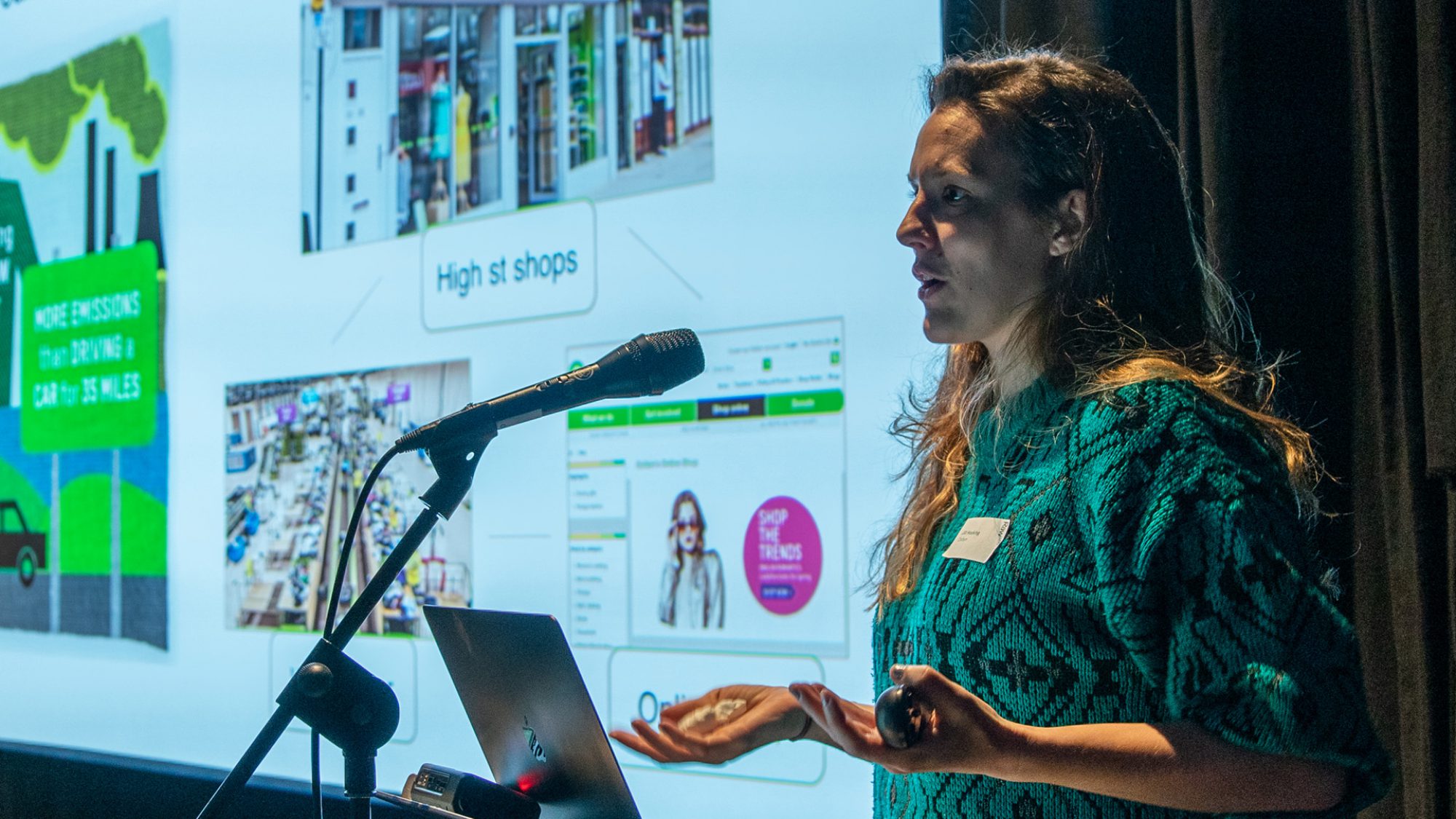

Jill Hocking, Marketing Manager at Oxfam, battled through the Christmas flu to give us a deep dive into the charity’s mass participation campaign, Second Hand September, at our latest Relay event, Mass Participation: Inspiration, Innovation, and Content.
Throughout September, Oxfam issued a challenge to the British public: Pledge not to buy any new clothes for 30 days. Instead they encouraged people to swap with their friends, fix and mend where they could, and, if they did have to buy, to buy second hand.
The strapline for the campaign was “No to new and less to yes”, with the intention of changing shopping habits.
Jill and the team decided to focus on an issue at the forefront of the collective consciousness – climate change. Internally they had identified a lesser-known threat to the global climate – “fast fashion” – and this seemed like the right place to start thinking about a campaign.
The textile industry is the world’s second-highest polluting industry, accounting for 8% of global greenhouse gas emissions. By worsening the climate catastrophe, the industry is directly affecting those living in poverty in the poorest regions of the world, who are being disproportionately damaged.
The production of one new shirt creates the same amount of emissions as driving a car 35 miles, and facts like that helped the team link fast fashion – where clothes rapidly make their way from the catwalk to shops, and, after quickly falling out of vogue, into the garbage – to climate change as a key contributor.
They decided to focus on a campaign that showcased the alternatives that they offered, in the form of their high street and digital second hand shops, as well as Wastesaver, their factory in Yorkshire where unsellable clothes from their shops get recycled into other products to ensure that nothing ends up in landfill. Oxfam had already been on a sustainable journey, and found a viable alternative to fast fashion.
Market research revealed that younger audiences really understood the term “sustainable fashion” and the problem it looked to solve. As a demographic who Oxfam typically found it hard to reach, this was a big plus.
Young people were shocked by the scale of the issue and the realisation that when they bought cheap clothes, they were contributing to climate change. They were also concerned that fast fashion employers were exploiting their workers in poorer parts of the world with low wages, and so these people in poverty were being affected doubly.
The research showed that buying and donating second hand clothes was seen as an accessible individual response to the problem. At this point, Jill and the team started to get excited that this could be an opportunity that the public would be interested in.
When asking people to change a habit, a challenge is often a great way to start.
Jill and the team held brainstorming workshops on other mass participation campaigns such as Dry January, Stoptober, and Christmas Jumper Day, and how they had achieved longevity as campaigns by being tied to a time of year.
September seemed like the perfect time to launch a clothing-based campaign as it’s a key touchpoint in the fashion calendar. September is the month when fashion weeks happen across the globe, Vogue does their shoot, high streets have sales due to changing seasons, and brands launch their new lines. Second Hand September was born!
Jill and the team worked through a few ideas and settled on an authentic approach to content, championing individual voices. They wanted to focus on the public taking part rather than their own brand, recycling UGC to give a feeling that this was an organic, people-led campaign.
Paid digital and social acquisition were chosen as their key channels to spread awareness and drive sign up and participation. This paid off, with 38,000 of the 62,000 people who participated in the campaign coming through these channels.
Initially the ask to the public was simply to take part for the sake of it, but after a lukewarm early reception the team tweaked their strategy. They incentivised signing up with a shop containing items donated at Glastonbury that only sign-ups had access to. Participation boomed!
Oxfam don’t pay for influencer posting but despite this the campaign was quickly picked up organically by influencers, as well as by the press. They attributed this to the link between fashion and Instagram, which helped bring influencers on board as the concept slotted naturally into their already heavily fashion-based activity.
Nectar partnered up to offer points for those who took part. Local initiatives, face to-face fundraisers and chuggers on the streets helped to spread awareness. The wider team also included mentions of the campaign in telemarketing calls and direct mail.
Assets were included in Oxfam’s festival space and local teams used tablets to sign people up.
After launching to some strong media coverage, Jill and the team then recycled that coverage through their own digital and social channels and with assets at festivals and in shops, to boost it out further.
When the campaign finished, #SecondHandSeptember had been used over 50,000 times on Instagram alone! Oxfam’s caller teams were overwhelmed by people calling in to ask questions.
Data acquisition from the campaign was particularly positive, with 80% of the 62,000 sign-ups new or reactivated members.
The campaign gave the PR team a positive topic to talk about with MPs and corporate partners at a time when the brand needed a boost, and the earned coverage that it generated was the equivalent cost of 2 million pounds of spend.
The acquisition cost of a participant was £6.
Influencers who posted about the campaign had a combined reach of 4 million.
Of course no brand can fully predict how viral a campaign might become, and so one of the issues that the team faced was running out of resource fairly quickly once it started to snowball.
The team were also surprised that, despite all the media coverage, Oxfam’s brand health didn’t see much of an improvement. Jill theorised that the campaign had taken on a life of its own, and that people had stopped associating the hashtag with their brand.
The final learning was that, despite running a brilliant campaign that outgrew expectations, income generation for the month didn’t improve year on year – potentially because the public had listened to the messaging and said “no to new” rather than “yes to less”. Overall there were plenty of learnings both positive and negative, and we’re excited to see what Jill and the team put together for next year!